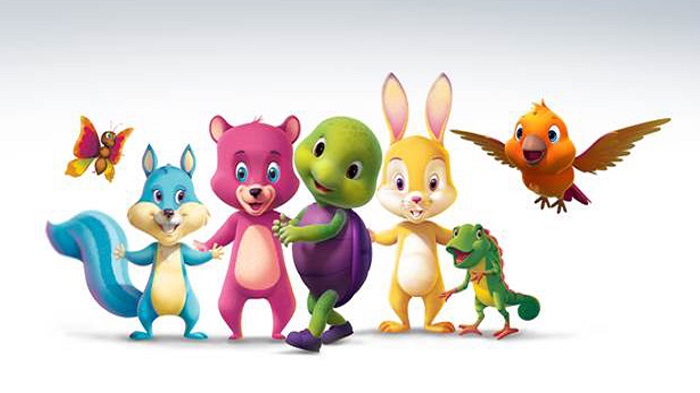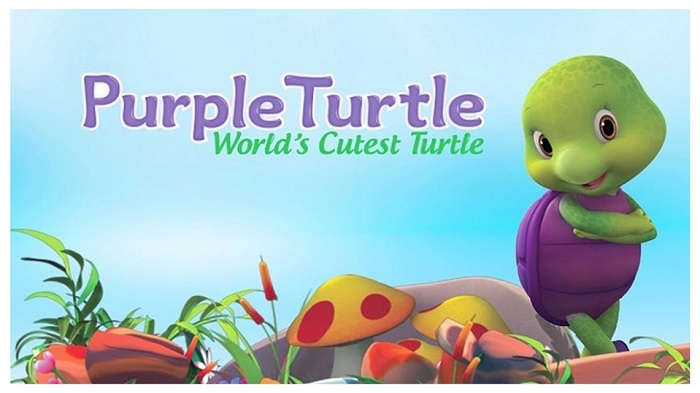Popular among the children, Purple Turtle has come a long way from simply being a part of comic books to much more. The brainchild of Aadarsh, Purple Turtle has secured an enormous number of books in multiple languages, created animated videos of stories and rhymes, merchandised the IP for various products, involved in preschool franchising, developed games and apps, newspaper syndication, and storytelling through the character mascot. With an intention to create a gender-neutral character of their own, Purple Turtle which was initially an imprint of the children books was transformed into a character and published with three books as a starter to test the water. Since then, they have never stopped, but seen success and received appreciation in a short span of time. Their foremost purpose was to create an IP that not only entertained but also educated the children at the same time it was fun, adored, and made them happy.
With the outright success of the cute little turtle, director Manish Rajoria shares his thoughts about his most popular IP, Purple Turtle, and the hard work that went behind it.

When was Purple Turtle launched and in what form? What was the inspiration behind it? Who was the brain behind the idea and story?
Purple Turtle was an imprint for the children’s books published by Aadarsh in 2006. In 2011, it was converted into a character. Swati Rajoria and Aadarsh’s team created various distinct concepts and ideas that gave life to very beautiful characters which children all over the world love. The animated videos of Purple Turtle have been directed by her. The stories were written by very experienced authors from various countries.
When did it transform into an animated series? How did it happen?
After the books started going to various countries like the US, China, Russia, and translated into multiple languages in India, the next logical step was to start working on an animated series. In 2014, we started converting some stories into simple animation for various digital channels and some rhymes and learning videos.
What did you see in Purple Turtle that made it stand out from the competition?
The character ‘Purple Turtle’ is cute and has his friends who simply love to be together and have fun. The stories are entertaining as well as educational. Children connect very well with Purple Turtle and its mascot. We educate children while being entertained. Children laugh and giggle watching the series at the same time learn to become responsible and compassionate.
How has your team grown over the years? Has Purple Turtle partnered with other businesses to expand its own?
From just one illustrator and one colouring artist in 2011, the team has grown and now we have a large team of writers and developers with many years of experience developing and writing award-winning children’s animation. My team comprises of Carter Crocker, who has written and story-edited for several animation studios including Disney and Warner Brothers; Dev Ross, whose preschool writing credits include Winnie the Pooh, Rainbow Ruby, Little People, Jakers!, Chloe’s Closet, Clifford the Big Red Dog, and Clifford’s Puppy Days; Karl Geurs, whose preschool animation writing credits include Winnie the Pooh, American Greetings’ Strawberry Shortcake, Little People and Hasbro’s My Little Pony; Gail Ellen Skroback Hennessey, who has written for children’s publications and is the author of six books for teachers and students; Suvarna Bhajanka, who has written more than 15 books for children; Lucas Remmerswaal, who is the author of The A-Z of 13 Habits; Cari Meister, who is the author of more than 200 books for young reader; Vanessa Black, who is the author of more than 20 books for young readers; and Swati Rajoria,who is the creative director for more than 500 books.
We have our co-producer’s team also involved in the animated series. Telegael is our co-producer from Ireland and we franchise our preschools.
When did you expand in the international market? Which international markets you have a presence?
Purple Turtle books were first published in India and in 2012; we sold our license in the US, then Russia, China and now in more than 25 countries and multiple languages in India. We have books going to many European countries, the Middle East and South East Asia as well.
When and how did you enter the app and digital market? Has the character merchandised earlier?
We have created an app for the Purple Turtle Smart Books which is free and can be used with books of Purple Turtle. We also are pioneers in smart wall coverings which come to live with the Scan Alive App. On the digital side, our eBooks are on more than 290 platforms and videos are on more than 1,000 devices. Available in the market are Purple Turtle merchandised books, stationery, bags, cushions, bean bags, t-shirts, and much more.
How long did it take to create Purple Turtle episodes? How was the capital accumulated for the development?
We hired a very experienced and Emmy-award winning team for the scripts of Purple Turtle who have written many shows for all the major broadcasters and producers. Capital came from the internal accruals of the organisation. We were lucky to start licensing before the show was made (based on the books).
Which summits/fairs were you a part of?
We have attended various book fairs like the Bologna Children’s Book Fair, Frankfurt Book Fair, New Delhi Book Fair, Brand Licensing Europe, Mip Com, and Kidscreen, and we continue to attend more.
Where do we see Purple Turtle in the next two years?
The Purple Turtle animated series will be very popular among children of various countries and children will love the books and the merchandise. We are creating 52 episodes of seven mins which will be ready by March 2019.

With great stories being produced with excellent quality of animation, music, and voice-over, we can surely expect that Purple Turtle will reach higher grounds with the team’s determination and precision.

